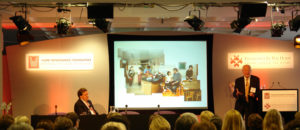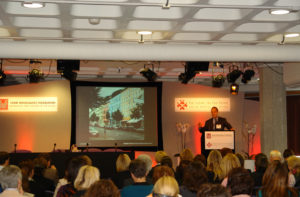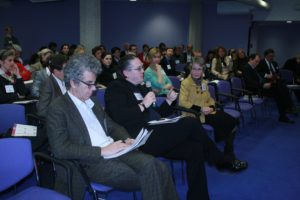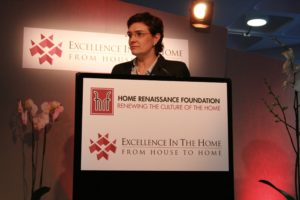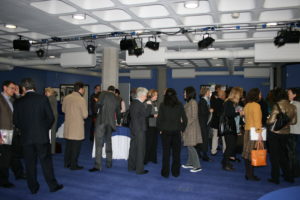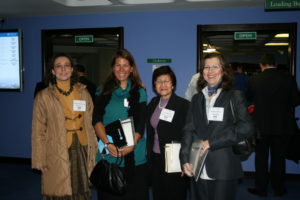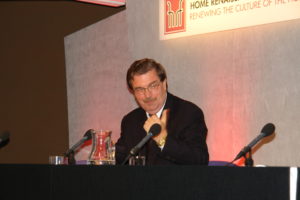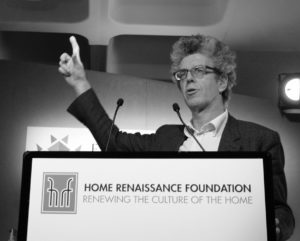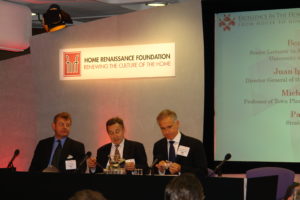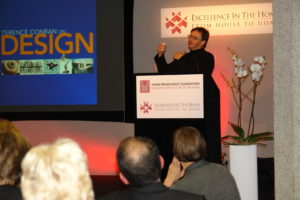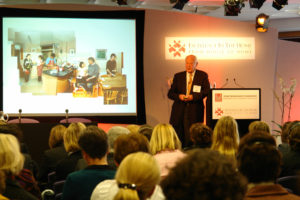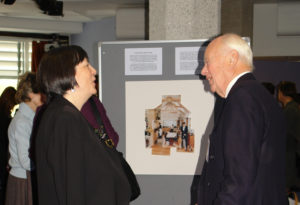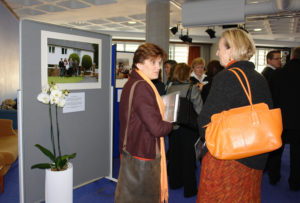2nd HRF Conference 2008 | From House to Home
London, November 20th & 21st 2008 | The Queen Elizabeth II Conference Centre
As Winston Churchill once said, ‘We shape our buildings and afterward our buildings shape us’. Where we live, that is to say our house, plays a significant role in the development of our lives. It is where our future is moulded, where we learn to live with others, where our values are defined, where we seek refuge, protection and security.
Over the course of the conference, the experts studied this role of the home and the way it might be managed in the future from the fields of architecture, interior design, business studies and homemaking. Delegates from more than a dozen countries gathered at London’s Queen Elizabeth II Conference Centre to answer the question: what makes a house a home?
The focus of architects and interior designers is mainly on the physical aspects of space and design. The concept of home, however, is so much wider. It encompasses anthropological aspects, the management of space and time, the home as a workplace, the home’s inhabitants and its evolution. The economic downturn and modern work tendencies bring with them new trends regarding the home. Homes have become houses that double-up as offices, creating an environment where the two realms, work and family, coexist more and more intensely. It is therefore necessary to respond to this new reality with larger and better structured accommodation in which every member of the family is catered for.
Charles Handy, writer, broadcaster and lecturer, the most influential living management thinker,
believes the home will shortly become “a place where people live, work, eat, sleep and play, a base of operations”. This is due in part to the fact that most people find taking work home with them convenient. It is also more convenient for organizations from an economical point of view: it is an unnecessary expense to provide office space for employees when the majority of the work they do could be done just as easily from home.” This new trend in home design can already be seen in the increasing demand of homes with areas specifically designated for work as well as homes with multifunctional open-plan rooms.
During the Conference, architects were encouraged to think ahead and consider how the ageing
population will alter design. Charles Handy offered the view: “Increasingly, more old people will live at home. Doors will need to be wide enough for wheelchairs”. Furthermore, Mr Handy said that the importance of the home cannot be underestimated and extends to the education of the individual. According to Mr Handy, “The most important school is the home, where you learn consideration for others. You learn about self-discipline much more than at school”.
Other speakers investigated how the physical structure influences the way a home can be created, how the interior and exterior space impacts on an individual’s well-being and development as well as why management skills are critical in the running of a home.
What definitively turns a house into a home is the care of others within that vital space. Without that activity, even when a space encompasses all the physical and aesthetical elements proper to a home, something essential is lacking.
The person can only find fulfillment within the home when the house is ‘made to work’ for them, i.e. when its resources and potentialities are successfully managed for the benefit and well-being of those living there. The home is a space that once constructed needs to be managed.
Achieving excellence in the home was a key proposal. Monica Lindstedt founded a Swedish company twelve years ago to outsource housekeeping services. The firm, called Hemfrid – meaning ‘peace at home’ – employs 800 people. Mrs Lindstedt, a working mother, saw a gap in the market created by ignorance of even basic domestic skills among Swedish parents.
Maria Julia Prats, Professor of Entrepreneurial Management at the IESE Business School (Barcelona), offered an alternative to buying in help: training people in home-making. She said homemaking had much in common with conventional professions. Like a doctor, homemakers have a duty to put others before themselves. She is convinced that professionals need a common basis of knowledge in addition to practical – and certifiable – skills, as well as some form of association and social recognition. Professor Lawrence Barth argued for more flexibility in housing policy. He stated “The role of the home is to cultivate autonomy in the next generation…There is a constant search for excellence within it.”
Oxford University’s Janine Nahapiet commented that homes are where children learn how to cooperate, by doing something as simple as solving a jigsaw puzzle together. “The home provides the foundation for relationships,” she said. “Families which are high in social capital have better educational, career and health outcomes.”
In bringing together interested and committed professionals, the second Excellence in the Home
Conference has contributed to interdisciplinary research on home-related issues in the twenty-first century. It is our vision to make the home the place in which each individual is respected and encouraged, thus enabling change in the direction of a more humane society. It is hoped that this research will inform both policy and practice in future.
- Bryan Sanderson CBE, Piers Gough
- Mr Paul Askew, Prof Michael Hebbert, Juan Ignacio Vidarte
- Sebastian Conran
- Monica Lindstedt, owner and Chair of Hemfrid I Sverige AB, Sweden
- Prof Lawrence Barth, Architectural Association, UK, Bryan Sanderson CBE Chairman of The Home Renaissance Foundation
